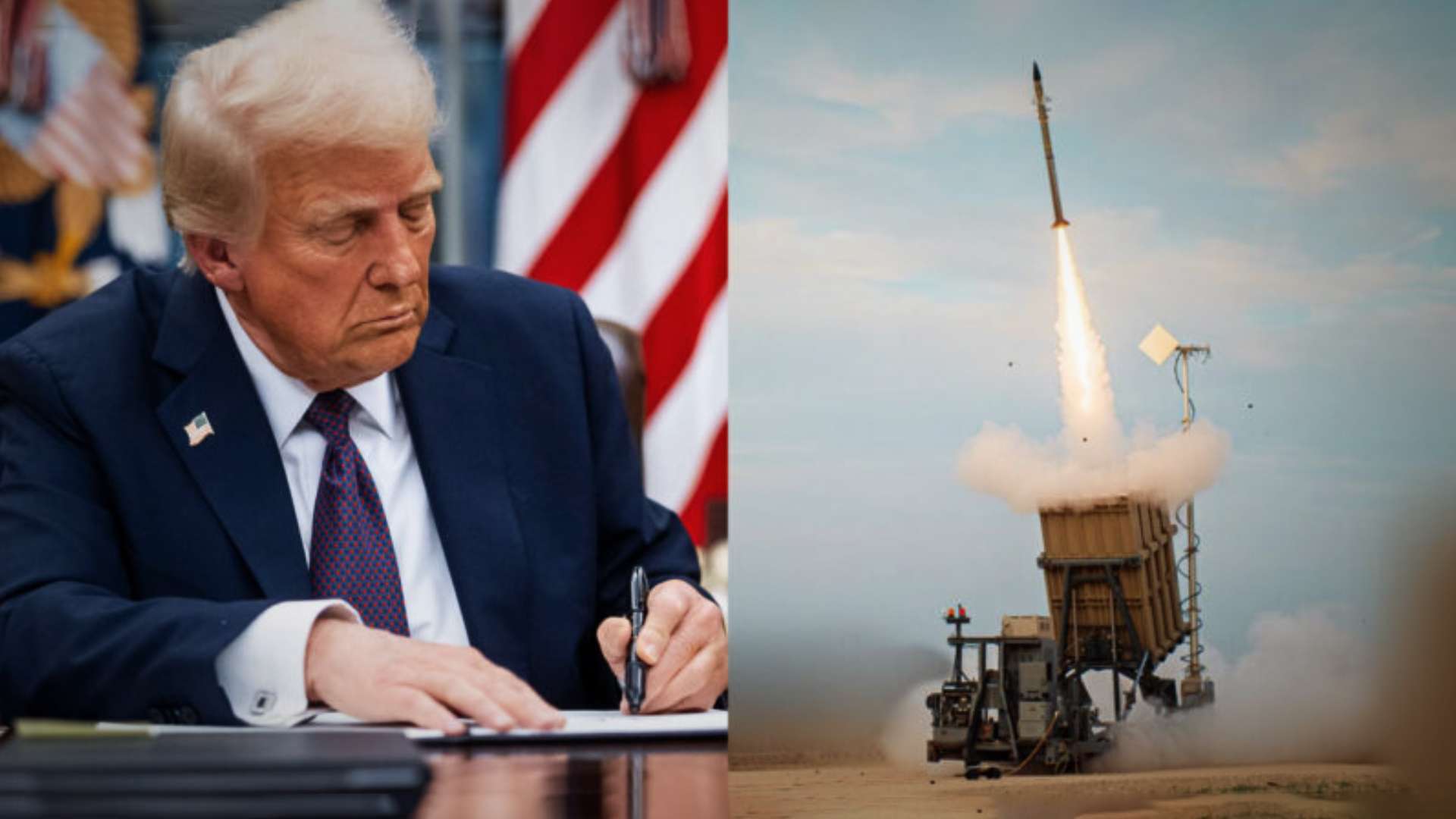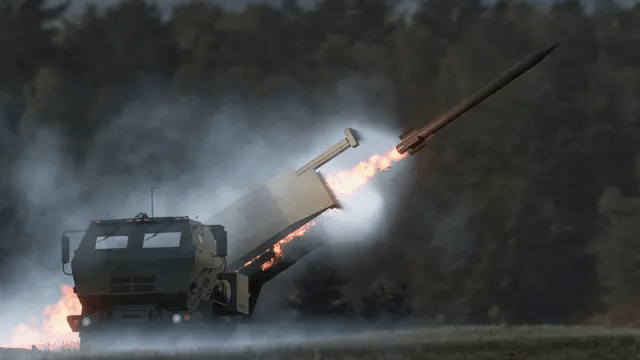Iron Dome Meets Star Wars: Trump Pushes for Orbital Interceptors to Counter Hypersonic Missiles

The U.S. defense strategy has always been shaped by the ever-evolving threats from global adversaries. In an era marked by unprecedented advancements in missile technology, President Trump’s administration has unveiled a new directive designed to bolster America’s missile defense capabilities. This initiative, dubbed the “Iron Dome for America“, is being heralded as a cutting-edge effort to protect the homeland from increasingly sophisticated missile threats, including hypersonic, ballistic, and cruise missiles.
A Bold Step Toward Strengthened National Defense
The “Iron Dome for America” concept, though reminiscent of Israel’s renowned missile defense system, takes a futuristic twist by incorporating space-based interceptors, which will be deployed in Earth’s orbit. The strategic importance of this move cannot be overstated, as it marks a pivotal shift in America’s approach to defense—one that fuses traditional defense strategies with innovative, high-tech solutions. This ambitious plan aims not just to protect American citizens, but to secure the U.S. from a variety of missile threats that could be launched from near-peer adversaries.
The move aligns with Trump’s overarching defense philosophy of “peace through strength,” emphasizing the need for a strong, reliable defense system capable of thwarting potential attacks. As missile technology has advanced, so too must the nation’s defense capabilities.

The Evolution of Military Technology: Adapting to New Threats
For over four decades, the U.S. military has faced the challenge of staying one step ahead in the arms race. The ever-changing landscape of missile technology has made it essential for American defense systems to evolve. Aggressors have developed delivery systems—ranging from intercontinental ballistic missiles (ICBMs) to sophisticated hypersonic missiles—that are difficult to intercept using traditional defense mechanisms.
In response, the Trump administration’s directive calls for a renewed commitment to developing and deploying next-generation missile defense systems. This initiative builds on past technological advancements and aims to rectify the shortcomings of earlier defense programs, such as the Strategic Defense Initiative (SDI) of the Reagan era. While SDI made significant progress in missile defense technology, it was ultimately shelved due to technical limitations and budgetary constraints. Trump’s new initiative is determined not to repeat these past mistakes.
A Multi-Layered Approach to Missile Defense
Central to the “Iron Dome for America” initiative is a multi-faceted defense strategy designed to address the full spectrum of missile threats. The system is not limited to a single layer of defense, but rather incorporates several components, including advanced sensors, interceptors, and tracking technologies.
- Accelerating Hypersonic and Ballistic Missile Tracking Systems
At the heart of this strategy is the development of enhanced tracking and sensor networks. The U.S. Department of Defense plans to roll out a suite of hypersonic and ballistic missile tracking space sensors that will provide real-time data on missile trajectories and speed. This cutting-edge technology will be key in detecting hypersonic missiles—missiles traveling at speeds greater than Mach 5, which are notoriously difficult to intercept due to their high velocity.
- Developing Advanced Interceptors
The initiative will also focus on the creation of next-generation interceptors, designed to neutralize threats at multiple stages of flight. These interceptors will be capable of engaging missiles during their boost phase, midcourse, and terminal phase, ensuring that there is no escape route for adversarial projectiles. The development of these interceptors is critical, as it provides flexibility in countering different types of missile threats.
- Space-Based Defense Layer
Another novel aspect of the “Iron Dome for America” plan is the proposal to deploy orbital interceptors, a futuristic approach that utilizes space for national defense. By placing interceptors in orbit, the U.S. will be able to deploy defensive assets at altitudes unreachable by conventional missile systems. This strategy promises to create a virtually impenetrable defense shield, capable of intercepting incoming missiles at the highest levels of the atmosphere.
Concerns Over Feasibility and Funding
While the objectives of this missile defense system are ambitious, critics have raised concerns over its feasibility and potential costs. With budget constraints, some have questioned whether the U.S. government can fund such an extensive and high-tech program.
However, the administration has firmly asserted that the cost of not investing in these defense systems could be far greater. As missile threats from nations like China and Russia continue to grow, ensuring the security of the American people and allies takes precedence. Furthermore, the program’s proponents argue that innovations in space technology and public-private partnerships will make the initiative more feasible.
Global Defense Cooperation: Strengthening Alliances
One of the key components of the “Iron Dome for America” initiative is its emphasis on international collaboration, particularly with allied nations. Recognizing that missile defense is a shared concern among the U.S. and its allies, the administration has outlined plans to strengthen defense cooperation with partner nations. The Pentagon has already begun exploring ways to integrate allied missile defense systems into the U.S. strategy, allowing for a more unified approach to missile defense across the globe.
By sharing technologies, intelligence, and expertise, the U.S. aims to create a collective defense network that enhances the security of both American forces and allied nations. This cooperation extends to military bases abroad, where U.S. troops can benefit from enhanced protection against missile threats.
The Potential for Escalated Arms Race
As the United States pushes forward with its ambitious missile defense plans, some experts warn that this could trigger an escalation in global arms races. If other nations perceive America’s missile defense advancements as a threat, they may be prompted to accelerate their own weapons development programs. This could lead to a dangerous cycle of competition, with countries continuously striving to outpace each other’s military capabilities.
Nonetheless, the Trump administration’s focus on missile defense may also act as a deterrent to potential adversaries, signaling that any hostile actions against the U.S. will be met with swift and decisive retaliation.
A Vision for the Future of U.S. Defense
The “Iron Dome for America” concept is an important step in America’s defense strategy. As threats evolve, so too must the methods of countering them. The implementation of advanced, space-based defense technologies not only showcases America’s technological prowess but also underscores its commitment to safeguarding the nation and its allies.
Trump’s vision for a secure, peaceful future aligns with the broader goal of ensuring that the U.S. remains prepared to confront the challenges of an increasingly unpredictable world. As this missile defense initiative continues to take shape, the eyes of the global community will undoubtedly be on America to see how it adapts to new and emerging threats.
Looking Ahead: Security in a Changing World
The implementation of the “Iron Dome for America” system marks the beginning of a new chapter in U.S. defense policy. By investing in innovative defense technologies and strengthening international alliances, the Trump administration is positioning the U.S. to confront the evolving missile threat landscape head-on. As the defense strategy progresses, the world will be watching closely to see how the U.S. adapts to future challenges and secures its place as a global leader in missile defense.
Key Takeaways:
- The “Iron Dome for America” aims to protect the U.S. from ballistic, hypersonic, and cruise missiles.
- It introduces space-based interceptors and advanced tracking technologies.
- Critics question the program’s feasibility and cost, but proponents stress its importance for national security.
- U.S. defense cooperation with allies will strengthen global security.
- The initiative could spark an arms race but also acts as a deterrent to adversaries.
Read more about the latest in missile defense technologies and U.S. defense strategies here.
Final Thoughts:
The “Iron Dome for America” initiative presents a bold vision for the future of U.S. defense, combining cutting-edge technology with a focus on international cooperation. By harnessing space-based systems, the U.S. is taking a significant step toward securing its borders and ensuring peace through military strength.
Featured Image Credit: MikeMareen/iStock






